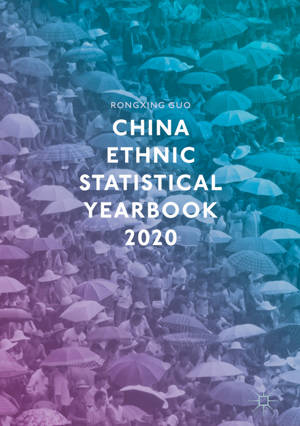
- Afhalen na 1 uur in een winkel met voorraad
- Gratis thuislevering in België vanaf € 30
- Ruim aanbod met 7 miljoen producten
- Afhalen na 1 uur in een winkel met voorraad
- Gratis thuislevering in België vanaf € 30
- Ruim aanbod met 7 miljoen producten
Omschrijving
This fully updated edition of the China Ethnic Statistic Yearbook, comprised of entirely original research, presents data on the socioeconomic situation of China's 56 ethnic groups. Although the majority of China's population is of the Han nationality (which accounts for more than 90% of China's population), the non-Han ethnic groups have a population of more than 100 million. China has officially identified, except for other unknown ethnic groups and foreigners with Chinese citizenship, 55 ethnic minorities. In addition, ethnic minorities vary greatly in size. With a population of more than 15 million, the Zhuang are the largest ethnic minority, and the Lhoba, with a population of only about three thousand, the smallest.
China's ethnic diversity has resulted in a special socioeconomic landscape for China itself. How different have China's ethnic groups been in every sphere of daily life and economic development during China's fast transition period? In order to answer these questions, we have created a detailed and comparable set of data for each of China's ethnic groups.
This book presents, in an easy-to-use format, a broad collection of social and economic indicators on China's 56 ethnic groups. This useful resource profiles the general social and economic situations for each of these ethnic groups. These indicators are compiled and estimated based on the regional and local data gathered from a variety of sources up to 2016 with up to date analysis.
This Yearbook also includes a new chapter on China's spatial (dis)integration as a multiethnic paradox.
Specificaties
Betrokkenen
- Auteur(s):
- Uitgeverij:
Inhoud
- Aantal bladzijden:
- 396
- Taal:
- Engels
Eigenschappen
- Productcode (EAN):
- 9783030490232
- Verschijningsdatum:
- 11/09/2020
- Uitvoering:
- Hardcover
- Formaat:
- Genaaid
- Afmetingen:
- 148 mm x 210 mm
- Gewicht:
- 675 g

Alleen bij Standaard Boekhandel
Beoordelingen
We publiceren alleen reviews die voldoen aan de voorwaarden voor reviews. Bekijk onze voorwaarden voor reviews.











